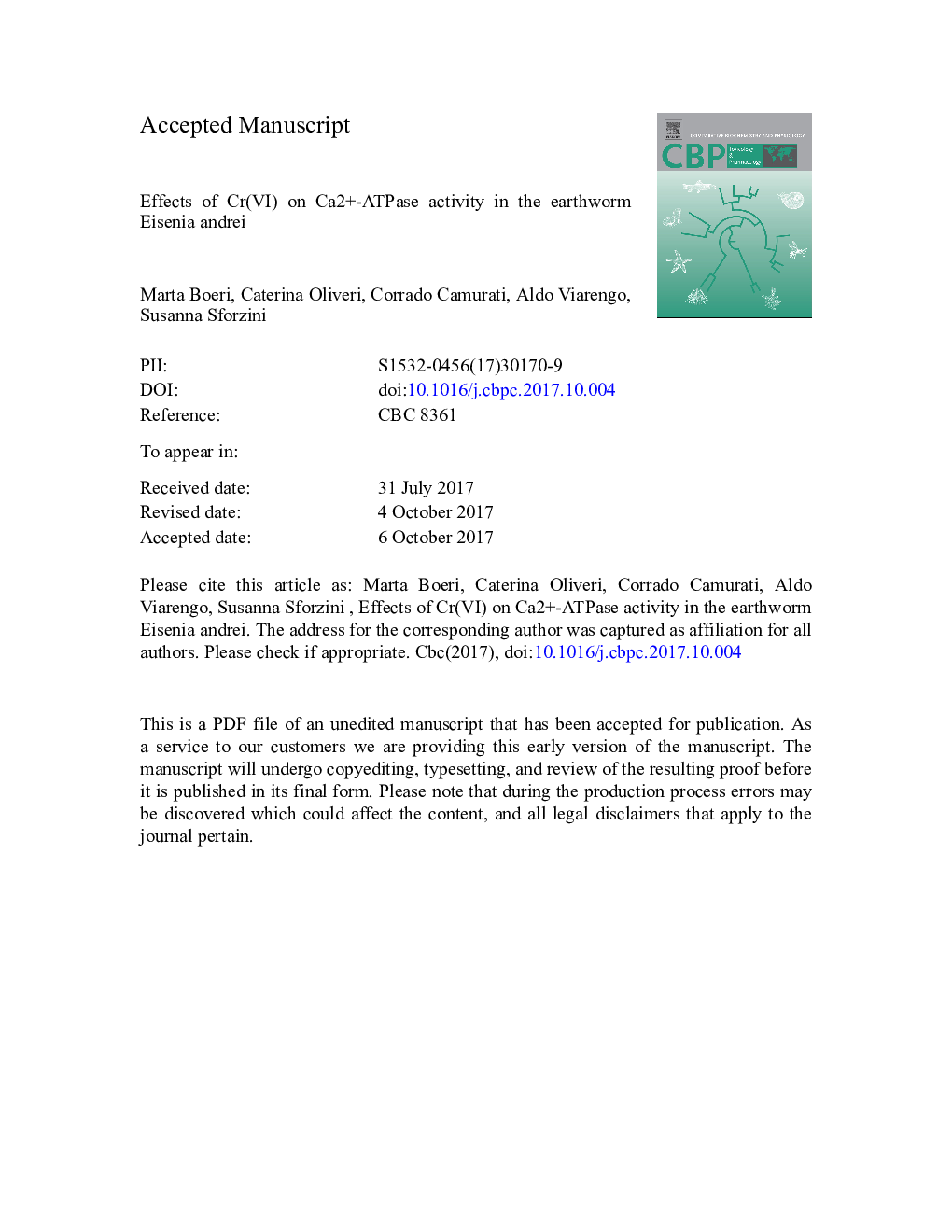| Article ID | Journal | Published Year | Pages | File Type |
|---|---|---|---|---|
| 8319063 | Comparative Biochemistry and Physiology Part C: Toxicology & Pharmacology | 2017 | 29 Pages |
Abstract
The effect of Cr(VI) as a soil contaminant on the edaphic worm Eisenia andrei was studied by evaluating the activity of Ca2Â +-ATPase in the intestinal mucosa. In eukaryotes, Ca2Â +-ATPase is a key mediator of cell signaling although comparatively little is known about its activity in earthworms. Size and anatomical constraints (i.e. small and complex) led us to develop and optimize a cyto-biochemical method to measure Ca2Â +-ATPase activity in earthworms. The principal site of enzyme activity was found to be the post clitellar intestinal tract; immunohistochemistry then identified plasma membrane Ca2Â +-ATPase (PMCA ATPase) in the apical area of the intestinal epithelium. Earthworms exposed for 28Â days to OECD soil contaminated with 1, 2, and 15Â mg/Kg Cr(VI) demonstrated about 70% inhibition of Ca2Â +-ATPase activity at the low Cr (VI) concentration (the half of the Italian law limit for residential areas), rising to approximately 84% inhibition at the highest concentration. Reduced enzyme activity was accompanied by decreased enzyme content and reduced lysosomal membrane stability (LMS), which is a well established early warning biomarker of stress. These data demonstrate the potential utility of Ca2Â +-ATPase activity as a sensitive parameter with which to detect environmental stress in earthworms.
Related Topics
Life Sciences
Biochemistry, Genetics and Molecular Biology
Biochemistry
Authors
Marta Boeri, Caterina Oliveri, Corrado Camurati, Aldo Viarengo, Susanna Sforzini,
